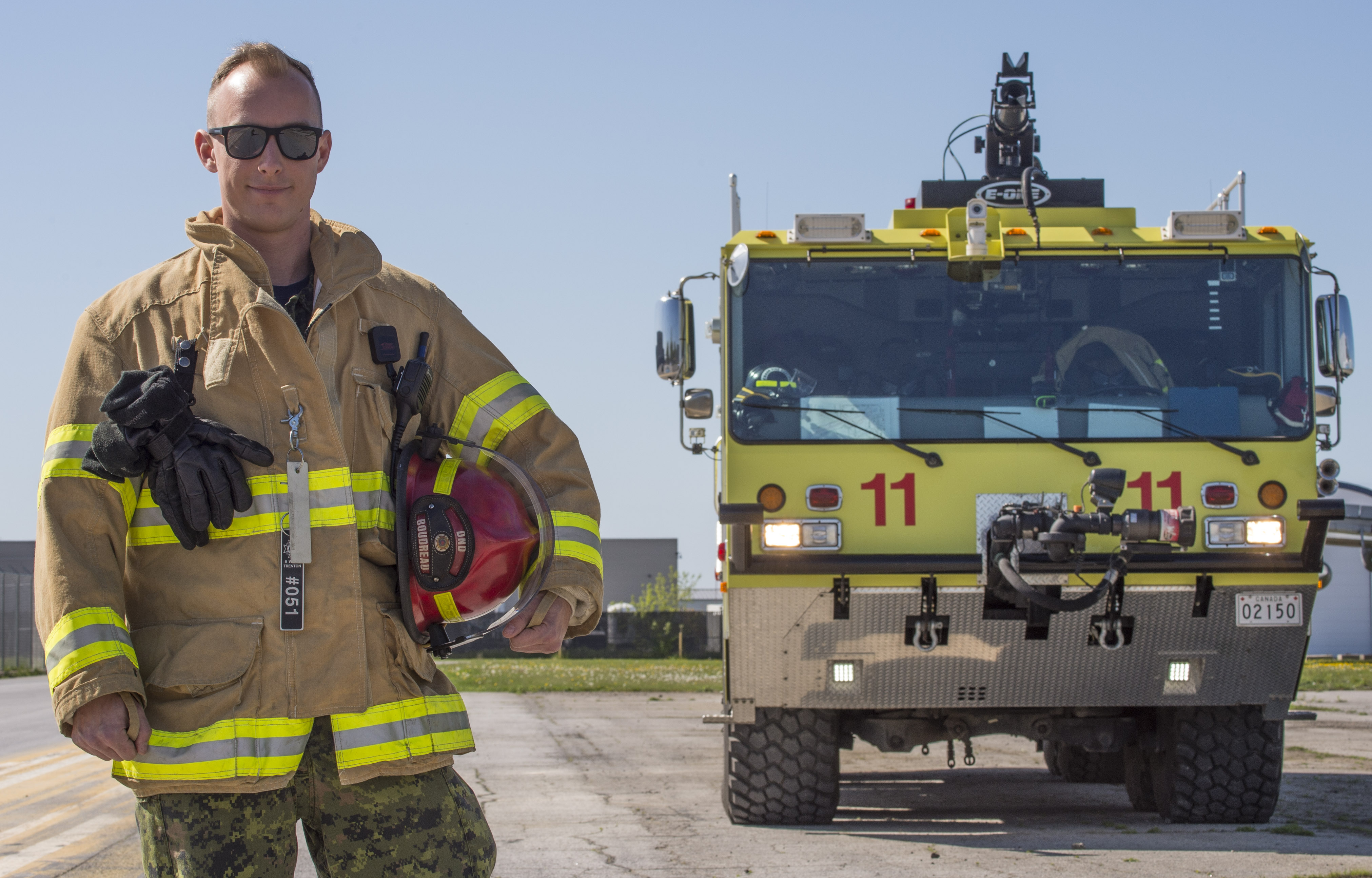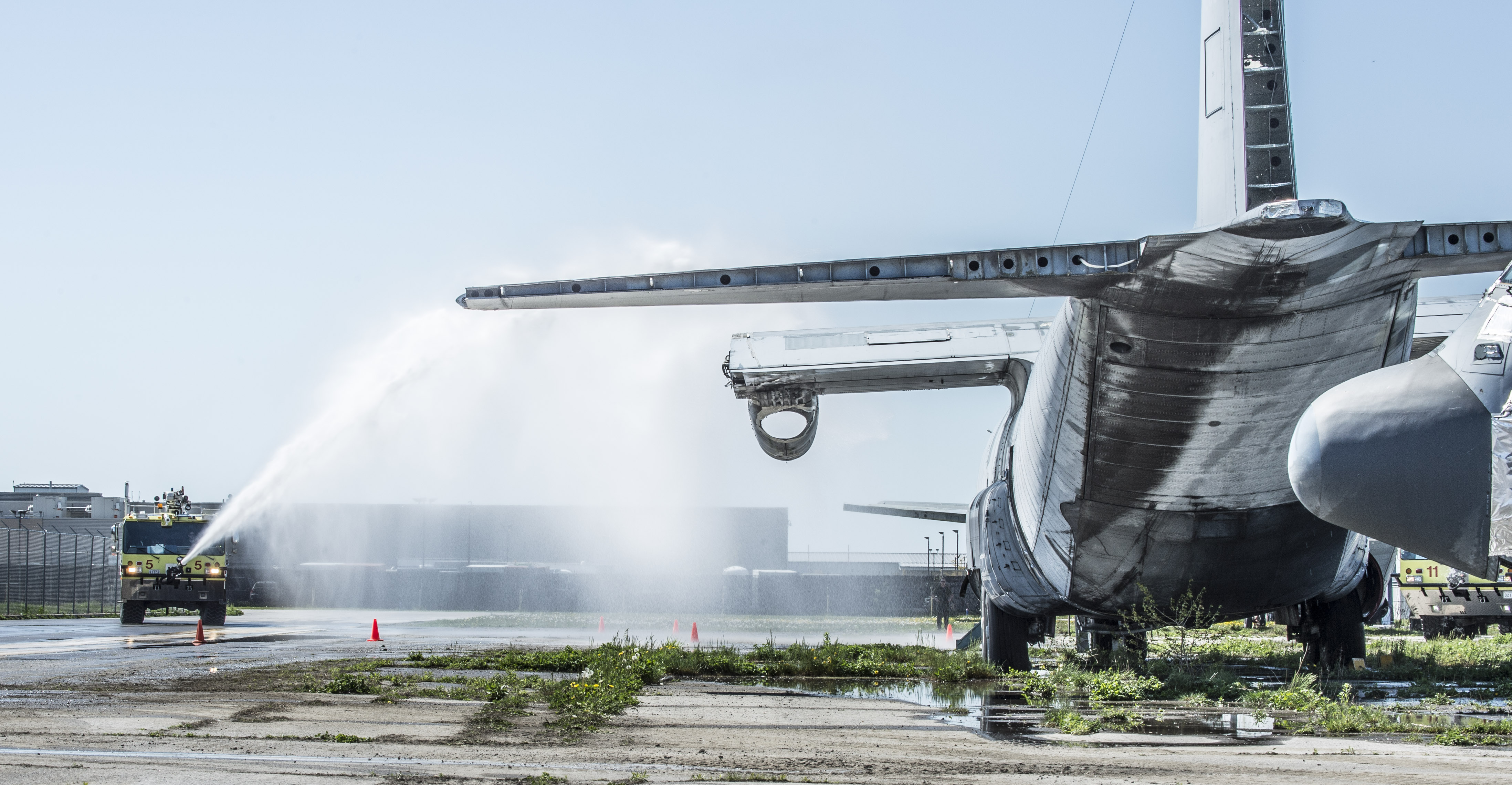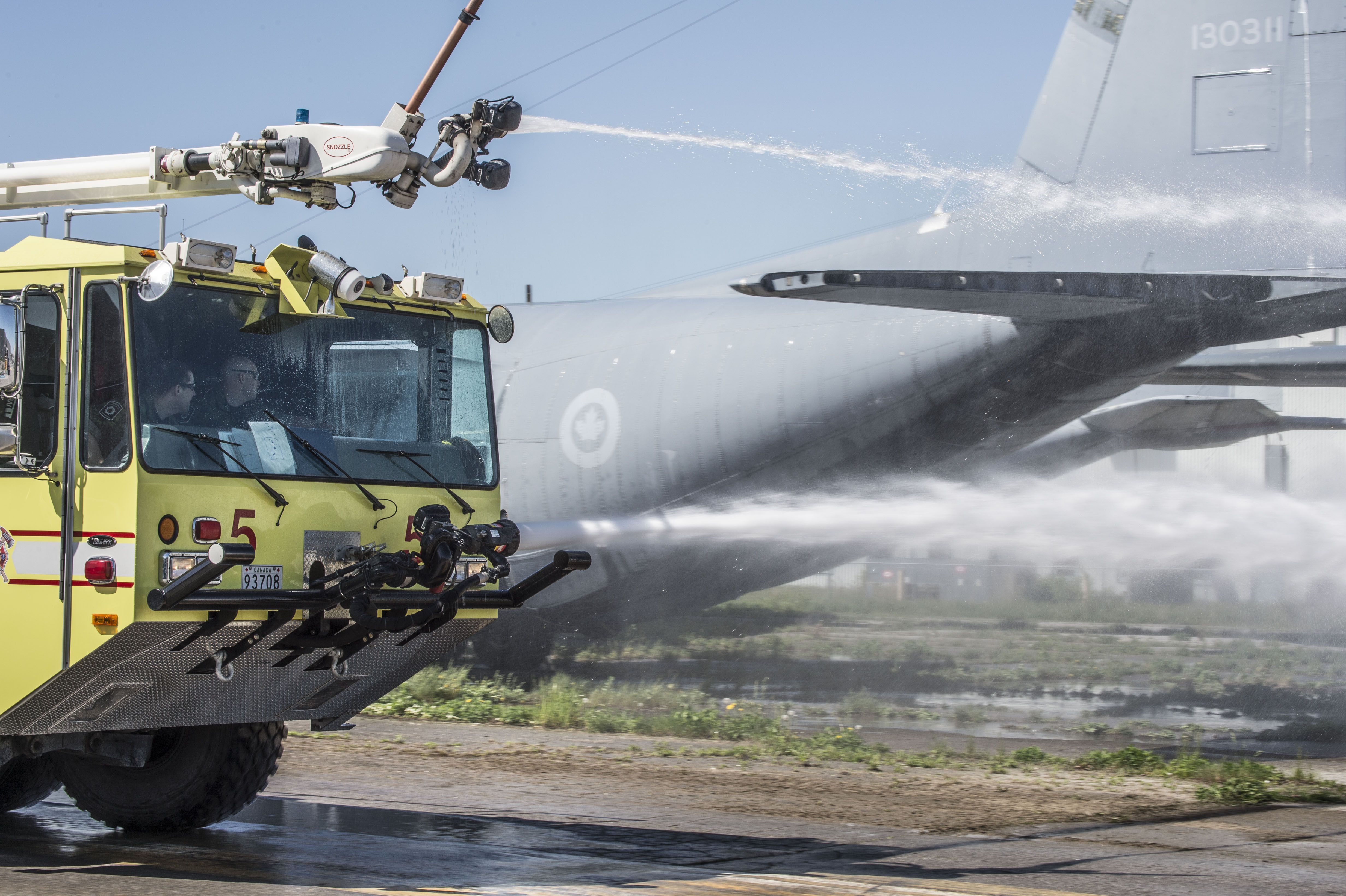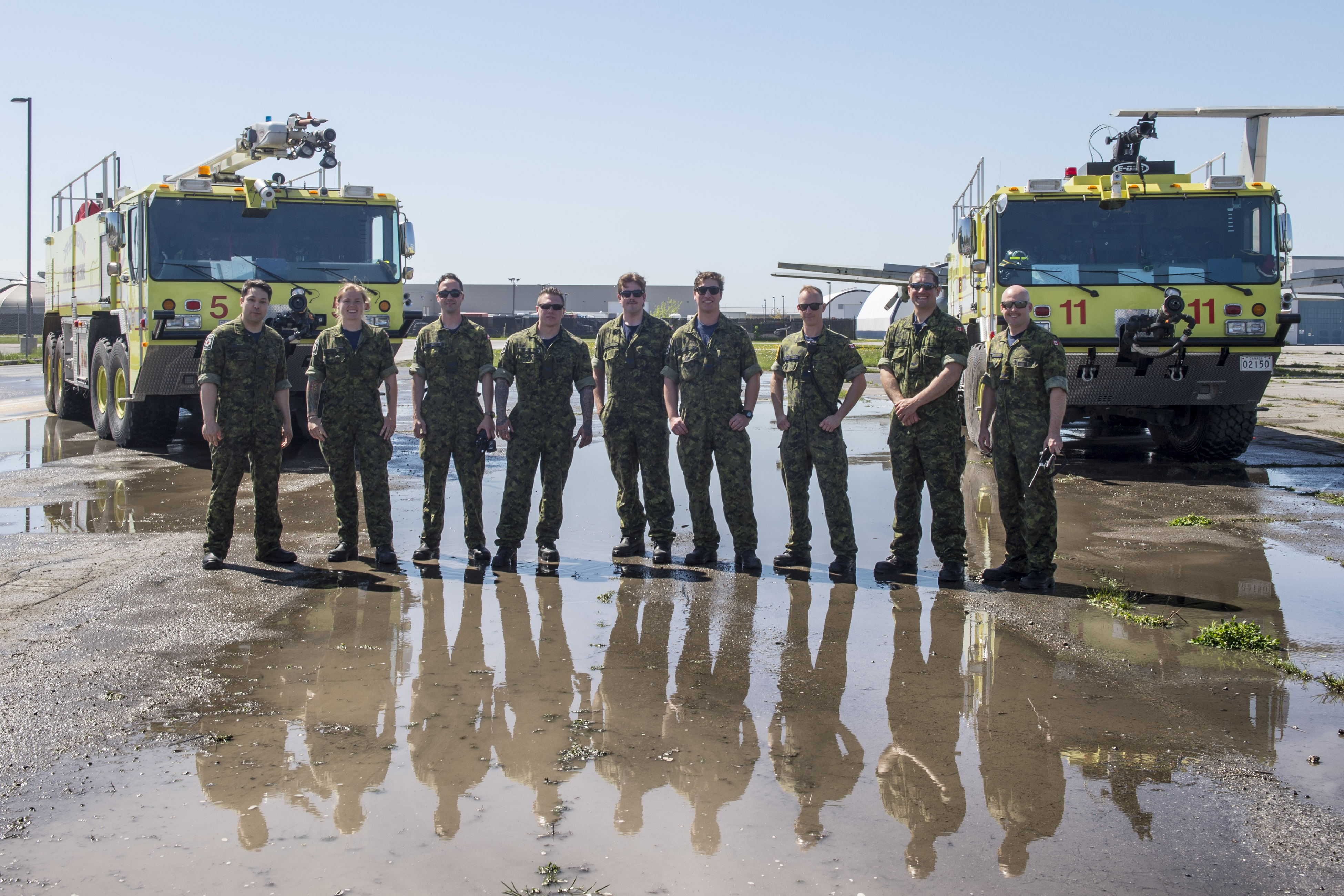Occupation Interview: Firefighter
Magazine Article / June 1, 2020
Sergeant Jonathan Boudreau joined the Canadian Armed Forces (CAF) in March 2009 as a Direct Entry Firefighter, and has since been posted to CFB Petawawa in Ontario (for on-job training), 12 Wing Shearwater in Nova Scotia, 17 Wing Winnipeg, and in 2019 was deployed on Op REASSURANCE in Romania. Currently, he is the Deputy Platoon Chief on the Blue crew for 8 Mission Support Squadron’s 85 Aircraft Rescue Firefighting fire hall at 8 Wing in Trenton, Ontario.
I wanted a dynamic career that would challenge me and I never wanted to do something that was the same day in and day out. I have a passion for learning and with the fire service career you are always learning something new, it never really stops. There is also a really unique culture and history to the fire service that you won’t experience anywhere else that makes it great. I attended Durham College and graduated the Pre-service Fire program and volunteered with various organizations to gain more experience. Not too long after that, I applied to the CAF as a firefighter.
My grandfather and my father. I’m the first firefighter in my family, but they helped guide me and supported me when I made the decision to go with this path. The rest of my family has careers in heavy machinery, trades, human resources, and patient care, so working in the fire trade I guess I blended all of that into one job plus more.
Normally, the initial training for a firefighter in the CAF is six to seven months and it takes place at the Canadian Forces Fire Fighting Academy at CFB Borden, Ontario. The initial program involves everything you need to start as a firefighter level 1001-2. There is a lot to cover, but some of the things you will learn are: understanding fire behavior; your Personal Protective Equipment (PPE); breathing apparatus; driving the trucks; and operating various pump systems, building construction, fire extinguishment, vehicle extrication, various forms of rescue and equipment; EMR (medical phase); knowledge of aircraft; aircraft firefighting; chemical, biological, radiological and nuclear (CBRN) theory and practical training, hazmat response; and the list goes on. There is a tremendous amount of material to learn. Also there is a physical testing portion of the course where you have to do a timed circuit with job-related task wearing full firefighting gear.
Coming into the trade you think it would be non-stop fires, I was surprised on how strict and well placed the fire prevention program is in the CAF. I learned from my first posting that a lot of my calls would be based around patient care, damage control and aircraft response.
I like how you never know what the day will bring. We have a pretty great training and daily routine set up on my crew and everything is laid out for the entire day, but that could change with the drop of an alarm. Being flexible with timings and planning really helps because you never know when you could be called out.
Now that I have worked in a senior leadership role, the common challenge I face is human resource management. You are in charge of keeping people safe, accountable, and ensuring that they are looked after. Every person on your crew has various goals, things happening in their personal lives, and requirements to ensure they are progressing and finding meaning with their careers. Keeping track of all of that, plus various admin and extra duties or responsibilities you might get, can be mentally tough. On top of that, maintaining manning between postings, taskings and releases is always a priority to maintain operations. In short, you have to be adaptable and resilient to get through tough times and having a great crew makes the difference in this job.
I have been lucky in my career to have worked with some exceptional firefighters, each has brought their own unique greatness into the job. I would say some of the best qualities I’ve seen, in my opinion, would be:
- A positive attitude - when times get tough you need to mentally keep moving forward;
- A charismatic personality - helps improve morale and there’s usually one or two people on the crew like this;
- Dedication - I have seen some members who go above and beyond to know their craft and they usually in turn make everyone on the team better and more driven;
- Professionalism - when you show up to a call or present yourself to the public, everyone should know that they have the greatest firefighters protecting their community;
- Appreciation of Diversity - everyone has various backgrounds and knowledge that makes the team stronger;
- Compassion - we need to be more understanding that not everyone deals with everything the same way and when providing care for those in need; and
-
Adaptability - things can change on the fly, so adapt and overcome.
I can’t lie, I find myself at work even on my days off working on various projects or other work-related things. When I’m not at work, I spend time with loved ones. I like to travel, fish, read and I spend time in the gym.
If you’re looking for a career where you will be constantly learning, engaged in dynamic operations, working with a team, and like to be physically active, then this is a great career path. To prepare, reach out to your local fire department and ask a few questions about their experiences and job. Also, a great exercise routine always helps; there is a big physical component to the job. You can also watch videos online; there are a lot of great resources out there to educate yourself before making a career choice.
Canadian Armed Forces (CAF) Firefighters (MOSID 00149) can trace their origin to the early days of the Second World War. A cadre of civilian firefighters were recruited and tasked with overseeing the training of the fledgling military fire service. The firefighting training establishments bounced around numerous bases and stations in southern Ontario during the first years of the service until finding its current home, the Canadian Forces Fire Academy, at Canadian Forces Base Borden in Ontario.
CAF firefighters are part of the Canadian Military Engineer branch, with approximately 366 in the occupation. Wherever the engineers or air assets are deployed or employed, there will likely be a CAF firefighter presence. CAF firefighters are responsible for providing firefighting services to the bases, wings, and deployed operating locations, as well as for any air assets, but they also have a critical role in fire prevention. They conduct fire and life safety inspections of the infrastructure, inspect and maintain firefighting equipment, conduct fire drills to prove the efficacy of the emergency team, and have an important role in infrastructure and deployed camp design.
CAF firefighters play an integral role in air operations.CAF aircraft on main operating bases cannot operate without crash-rescue protection.The scale of protection (airfield category) is determined by the size of the aircraft; the larger the aircraft, the more firefighting personnel, firefighting agent, water, and fire trucks that must be available to respond to an incident on the aerodrome.
In addition to supporting the Royal Canadian Air Force, the Firefighter occupation has enjoyed a long and storied relationship with the Royal Canadian Navy (RCN).Until recently, there were assigned CAF firefighters onboard each ship.They were responsible for inspecting and maintaining fitted and portable firefighting equipment onboard, training the ship’s crew in all subjects regarding firefighting, and for providing crash rescue service for the embarked and/or visiting helicopters. These responsibilities were transferred back to the RCN, and are currently carried out by Marine Technicians.



